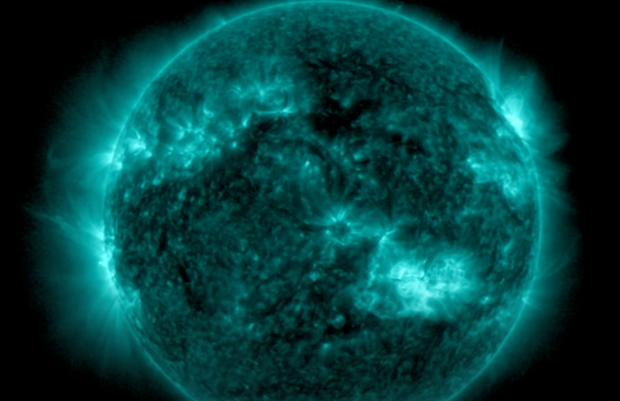CAPE CANAVERAL, Fla. and NEW DELHI (AP) – An unusually strong solar storm hit Earth on May 10-11, 2024, producing stunning displays of color in the skies across the Northern Hemisphere. The U.S. National Oceanic and Atmospheric Administration (NOAA) issued rare severe geomagnetic storm warnings as two powerful solar flares reached our planet earlier than anticipated (AP, NASA).
The first solar flare occurred at 9:23 p.m. EDT on May 10, while the second one peaked at 7:44 a.m. EDT on May 11 (NASA Solar Dynamics Observatory). These explosions sent billions of tons of plasma and magnetic fields from the sun's outer atmosphere towards Earth, causing geomagnetic storms that resulted in vibrant auroras across Europe, North America, and other parts of the Northern Hemisphere.
The most intense solar storm in recorded history occurred in 1859. However, no such intense effects were anticipated this time (AP).
NOAA alerted operators of power plants and spacecraft in orbit to take precautions due to potential disruptions. Power grids, communication networks, and satellite operations could be affected by the solar storm's magnetic fields (NASA, NOAA Space Weather Prediction Center).
For skywatchers across the globe, this celestial drama unfolded in stunning auroras that painted the skies with vibrant hues of pink, green, and purple. From northern Europe to Australia's Tasmania and beyond, people were able to capture stunning photos of these natural light shows (AP).
Solar storms pose potential risks to technological infrastructure. Fluctuating magnetic fields induced by geomagnetic storms can disrupt power grids, communication networks, and satellite operations. Elon Musk acknowledged the challenges posed by the solar storm for SpaceX's Starlink satellites but reassured that they were well equipped to handle it (SpaceX).
At least five coronal mass ejections (CMEs) are directed toward Earth and could arrive as early as midday on May 12. The sunspot AR3664, measuring about 124,000 miles across and one of the largest and most active sunspots seen this solar cycle, is responsible for these explosions (NOAA Space Weather Prediction Center).
As we continue to monitor the situation closely, it's essential to remember that solar storms are a natural phenomenon. While they can pose risks to technological infrastructure, they also offer a breathtaking display of nature's power.


